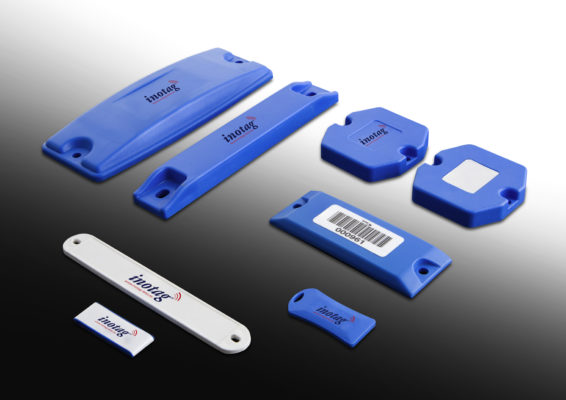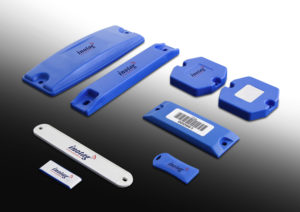The huge cost of retail loss, whether from shoplifting or from theft within the supply chain is a growing problem. According to the British Retail Consortium (BRC) in 2021/22 nearly £1billion was lost to customer theft, with eight million incidents. The frequency of warehouse theft has increased significantly too, with over 40% of respondents to a national survey saying their warehouse had experienced theft (source Marketscale).
Wireless technology is being used to combat this growing problem via inventory tracking and surveillance devices in the form of EAS tags and RFID tags and labels. These devices have become critical assets in combatting retail crime.
As RFID specialists, inotec UK often receives enquiries for both RFID and EAS tags and this blog outlines the differences to consider when deciding between the two technologies.
What is an RFID tag?
An RFID (Radio Frequency Identification Device) tag or label uses track and trace technology to generate useful data about the movement of assets. Each individual RFID tag has a unique identifier which means that a tagged item can be easily identified and distinguished from another tagged item.
RFID and clothing
Some companies put an RFID transponder on a hangtag which is attached to a clothing item. This will be cut off by the consumer before wearing the item.
Like an EAS tag, an RFID label on clothing can act as a theft prevention device. A small sticker attached to the clothing label or price tag can be deactivated at the till once the item has been purchased. If the label hasn’t been deactivated it will set off an alarm as the item goes through the security gate at the shop exit.
Introduced more recently than the EAS tag, RFID label and tags are more advanced with additional technology. An RFID tag has read and write capabilities which allow data to be stored on the tag itself. This data on an RFID clothing label for example, make and model, size, colour, batch number and other product information, can be updated in real time.
These sophisticated features enable users of RFID tags and labels to do much more than use them as simple anti-theft devices; their smart track and trace technology has revolutionised inventory management and control.
How an RFID tag works
An RFID system consists of both an RFID tag or label, antenna and an RFID reader. The RFID tags have integrated circuits, RFID chips, which can store information about the source.
The RFID tag can either be passive – powered by the radio frequency signal emitted by the reader or it can be active with an internal battery – transmitting its own signal containing that information which can be detected by the reader.
Unlike an EAS system, RFID is not restricted by line of sight and the data is both accurate and reliable as it is updated in real time.
This means that an RFID tag is highly flexible and can do much more than alert staff to the theft of an item. It has become a very popular tracking tool to monitor the movement of assets across many different industries including warehousing, retail and manufacturing.
What is an EAS tag?
An EAS tag is usually a hard plastic tag that is pinned to a retail item. As part of an electronic article surveillance (EAS) system, the tag is used to protect goods leaving the store which haven’t been paid for. Staff are alerted by an alarm which is triggered as the item is being taken out of the store.
These simple ‘sound alarm’ security tags do not usually carry information as they cannot store data; to become a data carrier they would need a chip.

How an EAS tag works
An EAS security system uses at least one electronic antenna, an EAS tag (or label) and a deactivating tool. The antennae are installed at the store’s entry and exit points and EAS tags are securely attached to each item instore.
Once in place the antennae emit a signal that can detect active tags in range. The antennae create a low frequency electromagnetic field that signals an alarm as an activated tag enters the field.
As items are purchased they are deactivated at the checkout by either removing the tag with a special tool or deactivating the label. The customer can then exit the store without triggering the alarm.
They have been successfully used by the retail industry as an anti-theft device for several decades.
RFID vs EAS: which system is best?
Over the years EAS systems have been relied on as essential anti-theft devices for retailers. If a basic system is required that will identify that a company has lost, or is about to lose a product, it is a simple, affordable option.
However, investing in an advanced RFID system offers many more features than an equivalent EAS solution. Yes it still allows tagging of products to prevent losses, but it also gives access to a whole host of real time inventory track and trace data.
This data can be used to automate the inventory management process, preventing time-consuming manual inventory checks and thereby optimising the efficiency of an operation.


